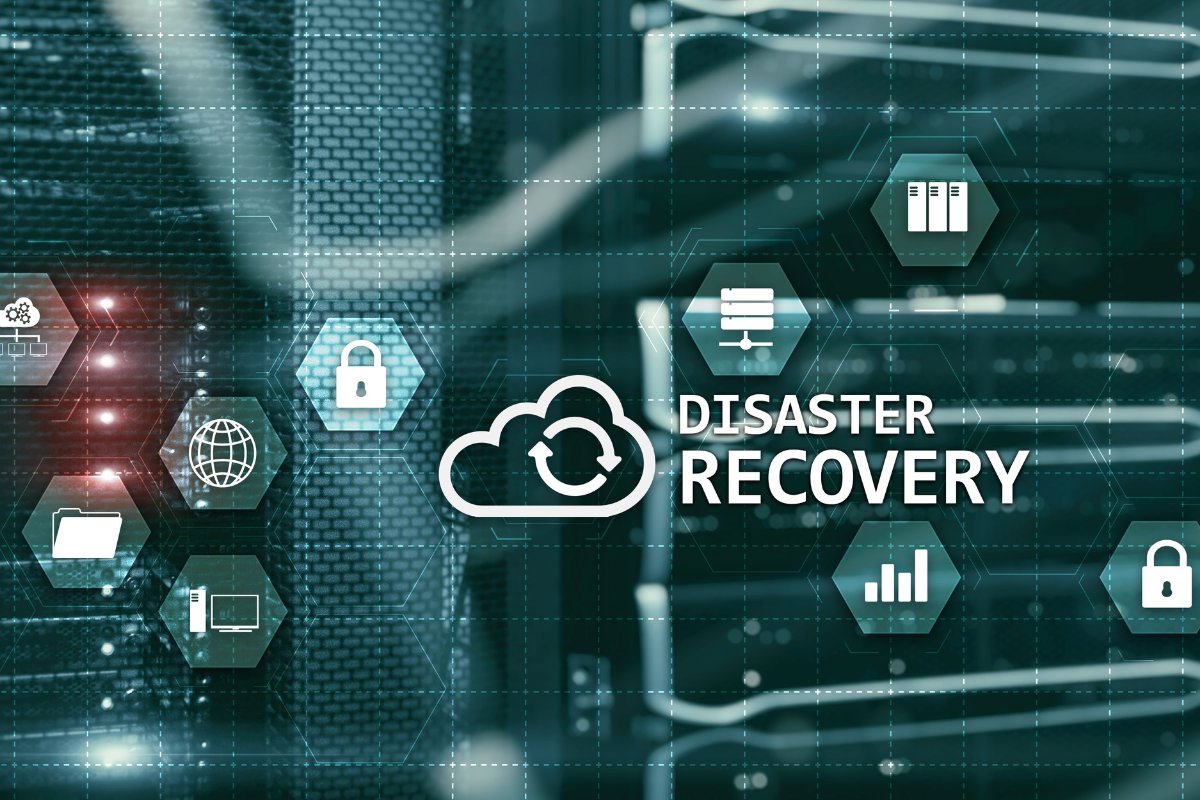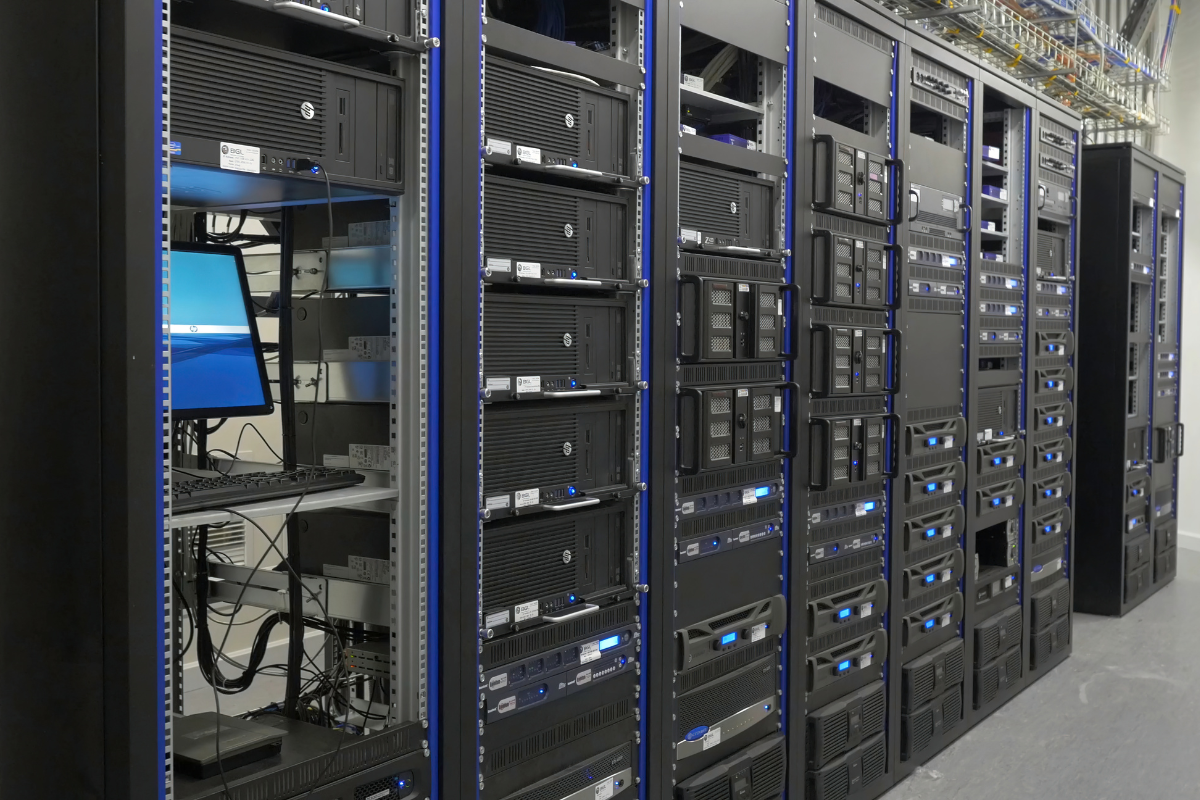Over 60% of service disruptions in 2022 resulted in at least $100,000 in total losses, marking a substantial jump from 39% in 2019.
The Uptime Institute discloses that the percentage of disruptions causing over $1 million in damages surged from 11% to 15% over the same timeframe.
What does it mean for your organization? Mainly one thing – that it’s essential to have a strong disaster recovery plan in place to protect your company’s assets and maintain continuous business operations.
Different types of disaster recovery models are available, including traditional, cloud-based and as-a-service. Our focus today is on the cloud disaster recovery solutions and why they are superior in ensuring business resilience.
What is Disaster Recovery In The Cloud?
Cloud disaster recovery refers to a comprehensive set of services aimed at securing data, applications, and other vital IT resources by leveraging cloud storage through a public cloud or a specialized service provider.

When a disaster happens, the compromised resources can be restored in a data center that is able to resume business operations of your company.
Why cloud disaster recovery provides much more than just storing backup data? It’s because DR in the cloud revolutionizes business continuity through the almost instant assumption of workloads during disasters.
This is achievable with additional cloud resources that operate concurrently, ready to take over previous tasks and processes of the affected environment.
Fundamentally, the goals of cloud-based DR and traditional disaster recovery are identical: preserving essential business assets during system interruptions.
Both strategies are integral components of a Disaster Recovery Plan (DRP) that every organization should prepare as an essential part of a wider Business Continuity Strategy.
Disaster recovery planning outlines critical parameters such as the Recovery Time Objective (RTO) and the Recovery Point Objective (RPO).
The distinctiveness of disaster recovery in the cloud lies in its exclusive advantages, unattainable with a conventional on-premise disaster recovery solution. What are they? Let’s delve into the operational dynamics of cloud DR.
Top 7 Benefits of Cloud Disaster Recovery
1. Consumption-Based Pricing Structure
The pay-as-you-go model of cloud disaster recovery presents an attractive solution for enterprises seeking to establish DR facilities without heavy upfront investments.
Unlike managed co-location providers, which often necessitate long-term agreements, cloud vendors empower companies to pay only for the actually utilized resources and services. This approach transforms expenses into predictable operational costs.
2. Enhanced Flexibility and Scalability
Traditional DR approaches, reliant on in-house or remote data centers, encounter restrictions in scalability and adaptability.
On the other hand, cloud disaster recovery solutions, including public cloud services and DR-as-a-Service (DRaaS), allow for on-demand resources.
This facilitates businesses to dynamically scale resources through self-service platforms, reducing expenses and augmenting flexibility.
3. Geographic Redundancy
Cloud disaster recovery surpasses physical location constraints, which provides geographic redundancy and unparalleled accessibility.
This method allows backup facilities to be located across multiple geographical locations, permitting swift transitions between a primary and secondary data center to unaffected servers during regional disasters.
The cloud providers offer a network that advances accessibility and protects against various disasters, defending the organization’s main infrastructure.

4. Accelerated Recovery
Cloud technology speeds up the recovery process, making it a critical part of today’s disaster recovery strategies. Here are some of its core features:
- Simplified Testing and Recovery: Streamlined processes facilitated by virtual machines that allow for hassle-free testing without affecting production.
- High-Speed Configurations: Opportunities to select high bandwidth and rapid disk I/O options, catering to specified recovery time objectives (RTO).
- Quick Adaptability: Enables faster adaptation to disruptions, ensuring minimal impact on business continuity.
5. Simplified Management and Maintenance
Cloud disaster recovery platforms come with intuitive management interfaces that simplify the monitoring and maintenance of your recovery strategy. Their features include also:
- Resource Optimization: Frees up IT personnel to focus on other crucial business sectors, enhancing overall productivity.
- Automated Updates: Regular automatic updates to the system, eliminating the need for manual interventions and maintaining up-to-date security protocols.
6. Expert Support and Consultation
Utilizing a cloud DR service often gives you access to a team of experts who can provide guidance and support, helping you to optimize your disaster recovery strategy and respond effectively to any issues that arise.
7. Innovation and Continuous Improvement
Cloud providers are at the forefront of technological advancements, ensuring that clients always have access to latest disaster recovery solutions.
Cloud Disaster Recovery vs Traditional DR vs DRaaS
These are only seven of many more undeniable advantages of cloud disaster recovery. But when considering a disaster recovery strategy and looking into different DR services, organizations must create their strategies with care.
Therefore, understanding the differences between cloud-based and traditional DR is crucial. Especially since there is now an additional option available, namely disaster recovery as-a-service.

Traditional DR
- Setting up a physical DR site requires a significant initial investment in infrastructure, including networking, servers, and staff, along with ongoing maintenance.
- Activating a physical disaster recovery site is time-consuming and requires manual intervention, which could lead to data loss and business disruption.
- If there are connectivity issues with the physical DR setup, manual operations will be necessary to restart site functionality.
- Reliance on hardware means that damage to equipment will require costly replacements and lead to downtime.
- Upgrading a conventional disaster recovery site is a laborious, expensive, and time-consuming process.
Cloud-based DR
- It is cost-effective as there is no need for hardware investments. Data snapshots and application data are kept inactive, and data synchronization is ensured between primary and secondary sites.
- Cloud disaster recovery sites can be swiftly activated, resulting in reduced downtime and decreased risks of data loss.
- It only requires an Internet-enabled device to initiate disaster recovery in the cloud.
- Cloud disaster recovery, using virtual servers, makes it easy and safe to move them between different data centers.
- It allows you to increase resources as needed to meet changing demands.
DR-as-a-Service (DRaaS)
- This option is good for small to medium-sized businesses that cannot afford to create or maintain a separate DR site. It also offers very attractive, flexible pricing models.
- This means companies do not have to manage disaster recovery on their own. Instead, a proficient third-party cloud vendor takes this responsibility.
- Often, this service provides a full disaster recovery platform with dedicated hardware, software, and cloud data centers.
Summary
When contemplating the appropriate DR plan – be it cloud disaster recovery, traditional DR, or disaster recovery as-a-service – aligning with your business continuity strategy is key. Expert consultation from a reputable disaster recovery center can provide valuable insights.
The fundamental purpose of a disaster recovery center is to prevent irreversible damage to your data and IT infrastructure due to system failures.
In case of a significant incident, the critical systems can be promptly restored, ensuring continuous business operations and maintaining client trust during service or production disruptions.